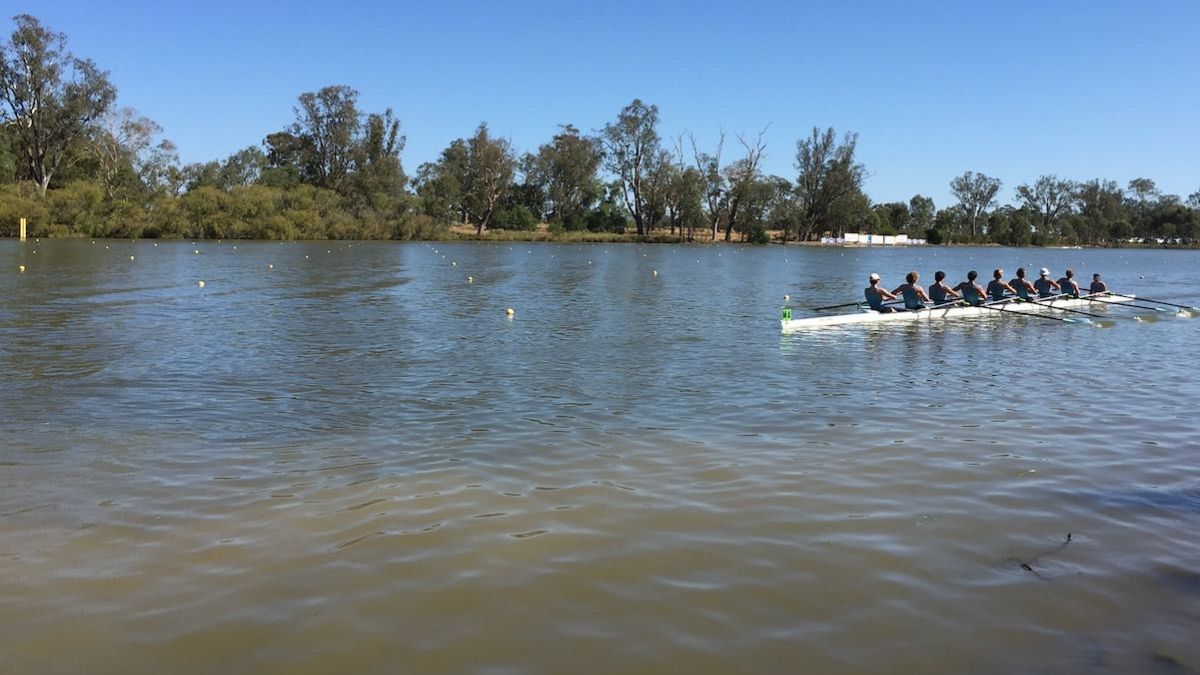Uncovering the True Meaning of Resilience
There is a word that echoes through the corridors of business, on the sidelines of sporting fields, (or the rowing arena - as one of our offspring was a keen rower) in the quiet conversations of parenting, and in the grand narratives of our lives. It's a word we use to describe people who endure immense hardship, who face soul-crushing adversity and somehow, impossibly, keep going. We praise it as a cardinal virtue, we celebrate it in our national heroes, and we desperately wish for more of it in ourselves.
That word is resilience.
But what does it actually mean?
I believe that for many of us, the common understanding of resilience is fundamentally flawed. We often picture it as a kind of brute force, an unfeeling toughness, like a granite boulder being pounded relentlessly by the ocean waves. We see it as the ability to "tough it out," to "suck it up," to put on a suit of emotional armour and march stoically through pain without ever flinching or showing a crack.
After more than forty years of navigating the often-brutal realities of the commercial world—from the highest highs of building RedBalloon into a household name, to the crushing lows of ventures that didn't succeed; from the intense public pressure of the Shark Tank to the private, unseen weight of leadership—I have come to believe that this definition is not just incomplete; it is dangerously wrong.

Resilience is not about being a rock. A rock, under enough sustained pressure, doesn't just endure; it shatters into a thousand pieces.
True, sustainable resilience is not about being hard and unyielding. It is about being strong and profoundly flexible. It is not the quality of a rock; it is the quality of a magnificent old gum tree in a fierce Aussie storm—bending, swaying, adapting, losing a few leaves and even a branch or two, but ultimately remaining deeply rooted and standing tall, even stronger, when the storm finally passes. It is not about avoiding the breaks; it is about having the capacity to heal stronger in the broken places.
I was once asked in a podcast interview to name the single most essential ingredient for a founder's success. My answer was not a brilliant idea, not a massive market, and not a mountain of funding. My answer, without a moment's hesitation, was resilience.
Because it is the meta-skill. It is the foundational quality that makes every other success possible. Without it, the best idea in the world will wither at the first sign of trouble.
So today, I want to go beyond the dictionary. I want to give you my definitive, practitioner's guide to the true meaning of resilience. We will dissect its core components, we will explore how it shows up in the real world, and we will map out how you can consciously and intentionally cultivate this unbreakable core in your own life and business.
Deconstructing the Meaning of Resilience - The Five Core Components
Resilience is not a single, monolithic trait. It is a dynamic, living system, a set of interconnected skills and mindsets that work in harmony to create a powerful inner core. In my experience, it is comprised of these five essential, interwoven components.

1. The Anchor of Purpose (Your "Why")
This is the bedrock. It is the deep, immovable root system of the gum tree. Resilience is not powered by willpower alone; willpower is a finite resource that, like a muscle, fatigues and eventually fails. True, enduring resilience is powered by purpose. It is the unwavering belief in a "why" that is bigger than your own comfort, bigger than your own ego, and bigger than your own fear.
When you are facing your darkest moments—and if you are an entrepreneur, I guarantee you will have them—when you've lost that career-defining client, when a product launch you poured your heart into has failed spectacularly, when you're staring at your bank account and you don't know how you're going to make payroll next week—your logical brain will be screaming at you to quit. It is the only "sensible" thing to do.
In those moments, the only thing powerful enough to override that logical voice of despair is your purpose. It is the deeper voice that whispers, "The work is not done yet. The mission is too important to abandon now."
When I started RedBalloon, my purpose was not to sell vouchers online. My purpose was to change the nature of gift-giving in Australia, to shift our culture from accumulating stuff to creating lasting memories through shared experiences. That mission was my anchor. As I detail in my book, Live What You Love, this purpose was the reason to get back up after every technical failure, every rejected partnership proposal, and every moment of crippling self-doubt. It is the first and most critical step in building a business with purpose.
The practical meaning: A resilient person has a clear, compelling answer to the question, "Why am I doing this?" Your purpose gives your suffering meaning, and it is that meaning that allows you to endure it and transform it into progress.
2. The Lens of Optimism (Realistic, Not Blind)
This is the way you consciously choose to see the world. It is crucial to understand that this is not about a naive, "Pollyanna" belief that everything will be perfect and that bad things don't happen. That is not optimism; that is delusion, and it is dangerous.
Realistic optimism, the kind that fuels resilience, is the fundamental belief that your actions matter and that you have the agency to influence a positive outcome, even in the face of adversity. It is the ability to look at a setback and see not a permanent, personal failure, but a temporary, specific problem to be solved.
This is the very essence of what Carol Dweck calls a "growth mindset," a topic I find myself returning to again and again. In a recent podcast episode, I explored this very idea of whether you need a growth mindset to succeed. The answer, unequivocally, is yes. It manifests in the difference between these two internal monologues:
- Pessimistic (Fixed Mindset): "This project failed. It's a total disaster. I'm clearly a failure. Nothing ever works out for me. It's pointless to try again." This language is permanent ("always," "never"), pervasive ("everything"), and personal ("I'm a failure").
- Optimistic (Growth Mindset): "This project failed. That is painful and deeply disappointing. Okay, what did we learn from this? What was the specific data point we missed? What part of our core assumption was wrong? How can we apply this valuable lesson to make our next attempt smarter and more likely to succeed?" This language is temporary, specific, and externalizes the event from your identity.
The practical meaning: A resilient person actively trains their mind to see the lesson in the loss, the opportunity in the obstacle. They don't deny the painful reality of a setback, but they refuse to give it the power to define their future.

3. The Muscle of Adaptability (Flexibility, Not Rigidity)
This is where the flawed "rock" analogy truly shatters. A rock has only one response to overwhelming pressure: it breaks. It is brittle. A resilient person, like the gum tree, has a wide range of motion.
Adaptability is the ability to let go of the plan when the plan is no longer working. It is the mental and emotional flexibility to pivot, to improvise, and to find a new path when your original one is blocked by an immovable object. It’s about having the humility to admit, "This isn't working," and the creativity to ask, "What else could we try?"
In business, this is the very soul of innovation. A founder who is rigidly attached to their original, "perfect" idea, despite market feedback to the contrary, is a founder who is destined to fail. A founder who is in love with the problem they are solving and is flexible and agnostic about the solution is a founder who can endure and ultimately thrive. They understand that the goal is not to prove their first idea was right, but to solve the customer's problem.
The practical meaning: A resilient person is not defined by their plan, but by their unwavering commitment to their purpose. They are willing to change their tactics, their strategy, and even their entire business model to find a better way to achieve their ultimate mission.
4. The Web of Connection (Support, Not Solitude)
This is the great paradox of inner strength. True, sustainable resilience is not a solo act. It is not about being a stoic, lone wolf who can handle anything and everything on their own. That is a romantic and dangerous myth that leads directly to burnout, isolation, and poor decision-making.
Resilience is a team sport. It is the courage and the wisdom to build a strong, supportive network around you and to have the strength to lean on it when you need to. It is the profound understanding that asking for help is not a sign of weakness, but a profound act of strength and strategic self-awareness. Every leader I admire understands the power of this web. It’s a key component of what I call transformational leadership.
This web of connection includes several critical strands:
- Your Personal "Board of Directors": A small, trusted group of mentors, peers, and advisors with whom you can be completely, vulnerably honest. These are the people you can call at 10 p.m. when everything is falling apart, who will listen without judgment and offer perspective.
- Your Team: Building a culture of psychological safety where your team feels they can share their struggles, admit their mistakes, and support each other through tough times is a powerful resilience-building strategy for the entire organization.
- Your Family and Friends: The people who loved you before your business existed and will love you long after it's gone. They are the ones who care about you, not your title, and can offer a crucial escape and perspective.
The practical meaning: A resilient person does not suffer in silence. They actively cultivate and nurture relationships that provide them with perspective, emotional support, and the practical strength to keep going. They know that we are always, always stronger together.
5. The Practice of Self-Care (Recovery, Not Depletion)
Finally, and perhaps most practically, resilience is not about having an infinite capacity to endure stress. It is about having a disciplined, non-negotiable practice of recovering from stress.
An elite athlete understands this perfectly. Their world-class performance is not just about how hard they train; it's about how intelligently they recover between training sessions. They are disciplined about their sleep, their nutrition, their hydration, and their rest days. They know that recovery is when the real growth happens.
The same is true for a leader or an entrepreneur. You cannot operate in a state of chronic, unrelenting stress and expect to be resilient. Your cognitive function will decline, your emotional regulation will fail, and your nervous system will eventually burn out. Resilience requires intentional, scheduled acts of recovery.
- Physical Recovery: Prioritizing sleep above all else. Fuelling your body with nutritious food. Moving your body every single day. These are not luxuries or "nice-to-haves"; they are fundamental, non-negotiable pillars of high performance.
- Mental Recovery: Giving your brain time to switch off from the constant problem-solving. This could be through mindfulness, meditation, spending time in nature, reading a novel, or simply engaging in a hobby that has absolutely nothing to do with your work.
- Emotional Recovery: Having healthy outlets to process the immense stress and pressure of your role, whether that's talking with a partner or a therapist, journaling, or simply having a good laugh with friends.
The practical meaning: A resilient person treats their own wellbeing not as an afterthought or a reward, but as a critical and central part of their professional performance strategy. They understand that to be strong for their business, they must first be strong in themselves.
The Meaning of Resilience in Action - A Story from the Trenches
These five components might sound good in a blog post, but what do they look like in the real world, when the pressure is on and the stakes are high?
I’ll take you back to the early days of the Global Financial Crisis in 2008. RedBalloon was a thriving, fast-growing business. But almost overnight, our corporate business—which was a significant and profitable chunk of our revenue—completely evaporated. Companies went into survival mode, and the first things they slashed from their budgets were staff rewards, incentives, and client gifts. We were looking at a terrifying, gaping hole in our financial forecasts.
The easy, "rock-like" response would have been to freeze, to panic. The rigid response would have been to keep pushing the same expensive corporate products to a market that was no longer buying.
Instead, we had to be the gum tree. We had to bend, or we would break.
- Purpose: We came back to our "why." Our mission wasn't just to sell corporate gifts; it was to help companies appreciate their people and build great, winning cultures. The need for that hadn't disappeared; in a crisis, the need for morale and recognition was more important than ever. Our purpose gave us our new direction.
- Optimism: We didn't see this as the end of the world. We saw it as a new and urgent problem to solve. We believed that if we could find a new way to deliver on our purpose within the new economic reality, we could survive.
- Adaptability: We couldn't sell the big, expensive, all-in experiences. So, we pivoted our product offering, fast. We quickly developed a whole new range of lower-cost, high-value experiences that companies could still afford. We shifted our marketing message from "extravagant rewards" to "cost-effective ways to maintain morale during tough times." We changed our solution to fit the new reality of the customer's problem.
- Connection: I leaned on my team, my mentors, and my network like never before. We were radically transparent with our team about the challenges, and their creativity and commitment were what got us through. I was on the phone constantly with other business owners, sharing strategies, offering support, and learning from their experiences.
- Self-Care: I knew that my team was looking to me for cues. If I panicked, the whole company would panic. I had to double down on my own practices of self-care—my morning walks, my protected family time—to ensure I could show up every day as a calm, steady, and optimistic leader for my team.
We didn't just survive the GFC; we came out of it stronger, with a more diverse and resilient product offering and a culture that had been forged in the fire of shared adversity. That is the meaning of resilience in action.
How to Cultivate Your Own Resilience - A Practical Guide
Resilience is not a genetic lottery prize. It is not something you are either born with or you are not. It is a skill set and a mindset that can be learned, practiced, and strengthened over time, just like a muscle. Here is how you can start your training regimen today.
- Define Your Purpose: Spend some quiet, uninterrupted time and actually write down your personal or professional purpose statement. Why do you really do what you do? Put it somewhere you can see it every day.
- Practice Active Gratitude: This is the simplest and fastest way to train your brain for optimistic thinking. Every night before you go to sleep, write down three specific things that went well that day and your role in making them happen. This actively rewires your brain to scan for the positive and to recognize your own agency.
- Embrace "Micro-Failures": Intentionally take on small, low-stakes challenges where you might fail. Try a new recipe, a different route to work, a new software program, or a new sport. Learning to handle small failures with curiosity ("Oh, that didn't work, I wonder why?") instead of fear builds your capacity to handle the big, high-stakes ones.
- Schedule Connection: Don't leave your support network to chance or "when I have time." Actively schedule a weekly call with a mentor, a monthly catch-up with your peers, or a non-negotiable date night with your partner. Put it in your calendar and treat it with the same importance as a major client meeting.
- Book Your Own Recovery Time: Look at your calendar for the week ahead right now. Where have you scheduled your "recovery"? Block out time for the gym, for a walk without your phone, for reading a novel, with the same seriousness you would a board meeting.

The Choice to Begin Again
The true meaning of resilience, in the end, comes down to a simple, profound, and deeply human choice. It is the choice to begin again.
After every setback, after every failure, after every storm, there is a quiet moment. In that quiet, painful moment, you have a choice. You can choose to stay down, to believe the story that you are defeated, that the obstacle is insurmountable.
Or you can choose to take a breath, stand up, dust yourself off, and take one more small, uncertain step forward, armed with the painful but valuable lesson you have just learned.
Resilience is the sum of a thousand of those small, courageous choices, made day after day. It is the quiet, powerful refusal to let your circumstances have the final say on your story. It is the deep, human capacity for hope, for learning, for healing, and for growth.
It is not about whether you get knocked down. If you are trying to do anything meaningful in this world, I can guarantee that you will. It is about who you choose to be in the moment you decide to get back up. That is the moment where true resilience is born. That is its truest meaning.
What does resilience mean to you, and when has it shown up most powerfully in your own life?





